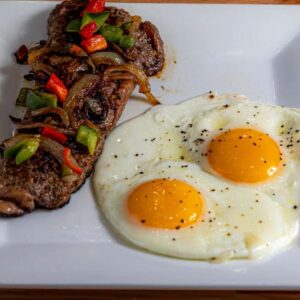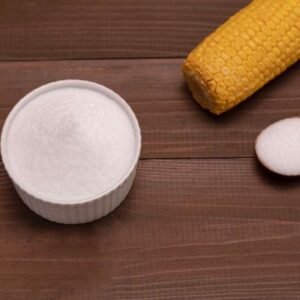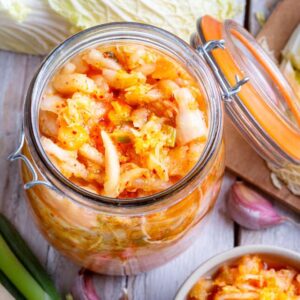
Is This Food Causing Your Joint Pain?
Are plants secretly trying to kill us?
Are all vegetables actually meant to be eaten by humans, or should some be avoided?
They are interesting questions, especially when you consider the defense mechanisms plants have. In fact, some plants produce compounds specifically to protect them from being eaten by insects and other predators.
Glycoalkaloids are one of these compounds. When a pest or predator eats a plant that produces these alkaloids, the compound binds to the cell membranes of the predator and causes its cells to burst open, killing the pest and protecting the plant.
Glycoalkaloids are found in many plants and vegetables but are concentrated in high amounts in plants from the nightshade family.
What are nightshades?
Nightshades are the common name for plants in the Solanaceae family, and include:
Tomatoes
Eggplants
Peppers, including spices from pepper like cayenne and paprika (but not black pepper — that’s a different plant)
Potatoes (but not sweet potatoes or yams)
Tobacco
Goji berries
Ashwagandha
There are poisonous nightshades as well, the most famous of which is the deadly belladonna. In fact, it wasn’t until about the 1800s that humans ventured to eat other plants in the nightshade family for fear they also were deadly.
How might nightshades cause joint pain?
The thought behind how glycoalkaloids in nightshade could present a problem in humans is that if you ingest considerable amounts of them, the alkaloids can damage the cell membranes in the intestines and lead to increased intestinal permeability, otherwise known as “leaky gut.”
The problem with “leaky gut” is that it allows bacteria and undigested proteins from food to enter the bloodstream. The immune system does not recognize these foreign proteins and bacteria, and mounts an attack against them that invokes inflammation. If the bacteria or proteins wind up accumulating in the fluid and tissues around the joints, the inflammatory response is localized and causes joint pain.
To make matters worse, some of the body’s tissues can closely resemble proteins from foods. So if the body is primed to attack a particular protein that happens to resemble joint tissue, joint inflammation can ensue.
What’s the evidence?
Researchers have found that glycoalkaloids from potatoes do indeed have harmful effects on intestinal cells — at least in mice.
In one study, mice that were fed deep-fried potato skins had increased levels of inflammatory markers and enhanced intestinal permeability. (The deep frying increased the glycoalkaloid content of the potato skins.) [1]
There haven’t been any placebo-controlled human studies that definitively shown nightshades can cause joint pain. However, there are extensive reports of folks that eliminated nightshades and experienced pain relief.
The closest thing to a human study was a survey done in the 1970s by Dr. N.F. Childers. Out of 763 people who responded to the survey, 72% responded that a nightshade-free diet had positive results for improving their joint pain. Dr. Childers did another survey in 1985, and 95% of 434 responders said a nightshade-free diet helped.[2]
Surveys like this certainly have their limitations for proving causality, but the magnitude of result is intriguing. Additionally, a simple Google search of “nightshades and joint pain” brings about countless anecdotal reports of people who have experienced improvement by eliminating nightshades.
Many alternative health practitioners advise eliminating nightshades for 30 days if you have joint pain or any other autoimmune inflammatory condition and then see if your symptoms improve. Then after 30 days, you reintroduce the foods and see if your symptoms return.
Bottom line: If you have joint pain, it might be worthwhile to try a nightshade-free diet for 30 days and see if it helps. It certainly won’t hurt to eliminate those foods for a month.
You can also reduce the glycoalkaloid content of certain nightshades by preparing them properly. Peel potatoes — most alkaloids are found in the skin. Avoid green tomatoes and sprouting potatoes — unripe or sprouting nightshades have higher alkaloid content. Ripe tomatoes contain far fewer glycoalkaloids compared with potatoes. Eggplants fall between potatoes and tomatoes.
Other ways to relieve joint pain
The cool thing about Mother Nature is that she has provided us with other plants that can help reduce joint discomfort.
Curcumin, the active component in turmeric (the bright yellow spice in curry) has strong anti-inflammatory properties that can help reduce joint pain.
Boswellia, found in the frankincense plant, has shown really great results in human studies to reduce joint pain and improve mobility.
White willow bark is the natural source of salicin and can help promote joint comfort.
Enzymes from plants are also showing great promise in promoting a healthy inflammatory response, which can help keep joints comfortable. When taken on an empty stomach, enzymes can help break down proteins such as fibrin, which can contribute to inflammation.
In fact, an enzyme from pineapple called bromelain has been shown to reduce mild knee pain in two human studies.[3] [4]
Bromelain and other helpful enzymes are the foundation of Enza-Soothe, Living Well’s joint comfort formula. We also added herbs such as white willow bark and devil’s claw to the formula, to help promote joint comfort.
We’ve gotten some really great feedback on the product. One gentleman told us: “I’ve noticed after a day on the golf course at age 57 I have far less joint discomfort.”
You can learn more about Enza-Soothe here.
Have you tried eliminating nightshades from your diet and had improvements in your joint pain? Let us know! livingwelldaily@lfb.org.
To living well,
Jasmine LeMaster
[1] Iablokov V., et al. Naturally occurring glycoalkaloids in potatoes aggravate intestinal inflammation in two mouse models of inflammatory bowel disease. Dig Dis Sci. 2010 Nov;55(11):3078-85. Epub 2010 Mar 3.
[2] Childers, N. F. et al. An Apparent Relation of Nightshades (Solanaceae) to Arthritis. Journal of Neurological and Orthopedic Medical Surgery (1993) 12:227-231
[3] Akhtar NM, et al. Clin Rheumatol. 2004 Oct;23(5):410-5. Epub 2004 Jul 24.
[4] Waler AF, et al. Bromelain reduces mild acute knee pain and improves well-being in a dose-dependent fashion in an open study of otherwise healthy adults. Phytomedicine. 2002 Dec;9(8):681-6.
View More Free Articles
A New Reason to Ditch Processed Junk
If you’ve ever walked the inside aisles of your local grocery store and thought, “This is all just junk,” your instincts were spot on. A new study published in the journal Thorax just added another red flag to the list of dangers linked to ultra-processed food—a 41 percent higher risk of lung cancer. That’s right....
When Being Winded on Stairs Is Serious (And When It Isn’t)
I had an athlete visit me recently because he experienced shortness of breath while climbing stairs. He is in great shape, so he was worried about what it might mean. “Doc,” he said, “I run five miles three times a week. Why am I huffing and puffing after two flights of stairs?” His concern is...
Study EXPOSES Hidden Danger Lurking in Your Car
We think of our homes and cars as safe havens. But according to a startling new study, they may be flooding your lungs with microscopic plastic particles—every single day. Researchers in France recently found that adults inhale an average of 68,000 microplastic particles daily from indoor air alone. To put that in perspective, that’s about...
Mailbag: Is Modern Food Making You Snore?
“What can cause snoring, and is there a way to correct this issue?” —Seeking Silence Hi Seeking, Snoring happens when the soft tissues in your throat relax and vibrate as air passes through during sleep. While several factors can cause snoring—from sleep position to nasal congestion—I want to share one trigger that might surprise you....
Simple Food Swap SLASHES Dementia Risk 28%
Let’s be honest… who would jump at the chance to cut their dementia risk by 28 percent. And no, you don’t need to run marathons, survive on broccoli, or learn to play the zither (whatever that is) to make it happen. All it takes is one easy swap—something that’s probably already in your refrigerator. Researchers...
This SMART Floss Exposes Hidden Health Danger
Scientists have created dental floss that doesn’t just clean between your teeth—it also tracks your stress while you’re flossing. Now, I know what you’re thinking… “Great—now even flossing is going to stress me out by telling me how stressed I am.” But this fascinating new tool from Tufts University could be a game-changer for understanding...
Is This "Safe" Sweetener Damaging Your Brain?
The headlines are alarming… “Popular Sugar Substitute Linked to Brain Cell Damage” and “Erythritol Could Damage Critical Brain Barrier” are just two of the dozens I’ve spotted recently. But before you toss every sugar-free product in your pantry, let’s take a closer look at what this study actually shows—and what it doesn’t. The latest research...
This Summer Threat Could SPIKE Your Blood Sugar
Picture this… It’s another scorching hot summer day. You crank up the air conditioning while watching the weather forecast, which predicts yet another “record-breaking” heat wave. It’s starting to feel like just another miserably uncomfortable summer. But what you might not realize is that—if you have diabetes—those rising temps could do far more damage to...
Move Over Yogurt—5 Foods That Pack MORE Probiotics
Let’s talk about your gut. The microbiome is the collection of trillions of bacteria and other tiny organisms that live in and on your body—especially in your gut—and help keep you healthy. I’ve written often about how vital it is to maintain a healthy microbiome. And you might have dutifully added yogurt to your shopping...
Is Your Heart Older Than YOU?
Maybe you feel young for your age. Good energy, decent sleep, eating your veggies. But what if I told you your heart might be a decade older than the rest of you? That’s exactly what researchers at Northwestern University found in a new study published in JAMA Cardiology. The average American woman’s heart is about...









